Alexandra Sokoloff's Blog - Posts Tagged "how-to-write-a-book"
Nanowrimo Prep: What's your PREMISE?
Today we're going to talk about PREMISE (again), because what we really need to start looking for in all the brainstorming you did is actual STORY LINES.
And it's possible that the best way to recognize stories in your own ideas (that is, STORIES, as opposed to IDEAS) - is to do some practice on PREMISE.
Get free Story Structure extras and movie breakdowns
One of the most frustrating (and sometimes amusing, in a morbid kind of way) things for me as an author and teacher is how difficult it can be sometimes to get a writer's story out of them.
It should be simple, right - to answer the question: “What’s your book about?”
But writers who are used to being in the thick of writing sometimes have only the vaguest idea of the big picture.
So the conversation often goes like this:
Me: "What's your book about?"
Aspiring author: “Oh, I can’t really describe it in a few sentences – there’s just so much going on in it.”
Worse - these conversations often happen at conferences where aspiring writers are being equally vague if they happen to be lucky enough to get into a conversation with an agent or editor.
(On the other hand, I was thrilled to have so many people who've read my books and follow this blog come up to me at RWA Denver and pitch me their perfectly honed and commercial premises!)
The time to know what your book is about is before you start it, and you damn well better know what it’s about by the time it’s finished and people, like agents and editors are asking you what it’s about.
You will learn a lot more about what your book or film is about as you're writing it. But you need to know what you think it's about before you start that draft.
And here’s another tip – when people ask you what your book is about, the answer is not “War” or “Love” or “Betrayal”, even though your book might be about one or all of those things. Those words don’t distinguish YOUR book from any of the millions of books about those things.
When people ask you what your book is about, what they are really asking is – “What’s the premise?” In other words, “What’s the story line in one easily understandable sentence?”
That one sentence is also referred to as a “logline” (in Hollywood) or “the elevator pitch” (in publishing) or “the TV Guide pitch” – it all means the same thing.
That sentence really should give you a sense of the entire story: the character of the protagonist, the character of the antagonist, the conflict, the setting, the tone, the genre. And – it should make whoever hears it want to read the book. Preferably immediately. It should make the person you tell it to light up and say – “Ooh, that sounds great!” And “Where do I buy it?”
Writing a premise sentence is a bit of an art, but it’s a critical art for authors, and screenwriters, and playwrights. You need to do this well to sell a book, to pitch a movie, to apply for a grant. You will need to do it well when your agent, and your publicist, and the sales department of your publishing house, and the reference librarian, and the Sisters in Crime books in print catalogue editor, and that Amazon KDP screen asks you for a one-sentence book description, or jacket copy, or ad copy. You will use that sentence over and over and over again in radio and TV interviews, on panels, and in bookstores (over and over and OVER again) when potential readers ask you, “So what’s your book about?” and you have about one minute to get them hooked enough to buy the book.
And even before all that, the premise is the map of your book when you’re writing it.
So what are some examples of premise lines?
Name these books/films:
- When a great white shark starts attacking beachgoers in a coastal town during high tourist season, a water-phobic Sheriff must assemble a team to hunt it down before it kills again.
- A young female FBI trainee must barter personal information with an imprisoned psychopathic genius in order to catch a serial killer who is capturing and killing young women for their skins.
- A treasure-hunting archeologist races over the globe to find the legendary Lost Ark of the Covenant before Hitler’s minions can acquire and use it to supernaturally power the Nazi army.
Notice how all of these premises contain a defined protagonist, a powerful antagonist, a sense of the setting, conflict and stakes, and a sense of how the action will play out. Another interesting thing about these premises is that in all three, the protagonists are up against forces that seem much bigger than the protagonist.
Halloween is upon us, so here’s my premise for my ghost story THE HARROWING:
Five troubled college students left alone on their isolated campus over the long Thanksgiving break confront their own demons and a mysterious presence – that may or may not be real.
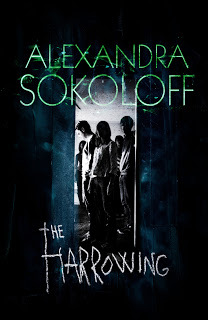 I wrote that sentence to quickly convey all the elements I want to get across about this book.
I wrote that sentence to quickly convey all the elements I want to get across about this book.Who’s the story about? Five college kids, and “alone” and “troubled” characterize them in a couple of words. Not only are they alone and troubled, they have personal demons.
What’s the setting? An isolated college campus, and it’s Thanksgiving - fall, going on winter. Bleak, spooky. Plus – if it’s Thanksgiving, why are they on campus instead of home with their families?
Who’s the antagonist? A mysterious presence.
What’s the conflict? It’s inner and outer – it will be the kids against themselves, and also against this mysterious presence. What are the stakes? Well, not so clear, but there’s a sense of danger involved with any mysterious presence.
And there are a lot of Clues to the Genre – sounds like something supernatural’s going on, but there’s also a sense that it’s psychological – because the kids are troubled and this presence may or may not be real. There's a sense of danger, possibly on several levels.
And you can see how that premise sentence inspired one of the major planks of the selling campaign for that book (and any book) - the cover design, one of my favorites. (The UK edition, from Little Brown, the US edition, on Amazon.)
The best way to learn how to write a good premise is to practice. Take that list of ten books and films I made you do here, that are in the same genre as your book or script - preferably successful - or that you wish you had written! Now for each story on that list, write a one-sentence premise that contains all these story elements: protagonist, antagonist, conflict, stakes, setting, atmosphere and genre.
If you need a lot of examples all at once, pick up a copy of the TV Guide, or click through the descriptions of movies on your TiVo. Those aren’t necessarily the best written premises, but they do get the point across, and it will get you thinking about stories in brief.
So there are three exercises I'd like to suggest for you to try.
1) Take your master list of ten books and films and write a premise sentence for each. Share a few here if you care to - it will help other people and that's good karma!
2) Write your OWN premise, for your WIP or potential project.
Be sure your premise includes
Who's the story about?
What’s the setting?
Who’s the antagonist?
What’s the conflict?
Clues to the genre
And 3) harder, but really, really worth it - look at your mass (or mess) of brainstormed ideas and see if you can pull and/or create ten (oh, all right, five) complete premises out of that list.
Or do three this week, three next week, three the next...
And that third option is something I'm saying TO MAKE MYSELF DO IT, too, so no whining about how I've completely gone off the deep end. I have, of course - but I also think the story ideas that would come out of really taking that last exercise seriously would raise anyone's writing to the next level. And perhaps yield something exciting and HIGH CONCEPT.
But if you're not familiar with writing premise lines, the most important exercise for you right now is 1) - write the premise sentences for your own master list. It's like doing piano scales. Repetition is the mother of skill.
- Alex
=====================================================
All the information on this blog and more, including full story structure breakdowns of various movies, is available in my Screenwriting Tricks for Authors workbooks. e format, just $3.99 and $2.99; print 13.99.
STEALING HOLLYWOOD
This new workbook updates all the text in the first Screenwriting Tricks for Authors ebook with all the many tricks I’ve learned over my last few years of writing and teaching—and doubles the material of the first book, as well as adding six more full story breakdowns.
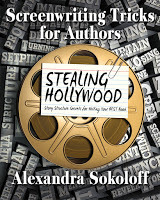
STEALING HOLLYWOOD ebook $3.99
STEALING HOLLYWOOD US print $14.99
STEALING HOLLYWOOD print, all countries
WRITING LOVE
Writing Love is a shorter version of the workbook, using examples from love stories, romantic suspense, and romantic comedy - available in e formats for just $2.99.
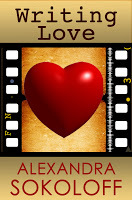 - Smashwords (includes online viewing and pdf file)
- Smashwords (includes online viewing and pdf file)- Amazon/Kindle
- Barnes & Noble/Nook
- Amazon UK
- Amazon DE
---------------------
You can also sign up to get free movie breakdowns here:
Get free Story Structure extras and movie breakdowns
Nanowrimo Prep: Brainstorm your book with index cards
by Alexandra Sokoloff
Two weeks to #Nanowrimo. Are you panicking because you have only the vaguest clue what you're writing about?
Here's a fun and lighting-fast brainstorming method that I absolutely guarantee will get you closer to understanding the story you want to write.
It's the number one structuring tool of most screenwriters I know. I have no idea how I would write without it.
Get free Story Structure extras and movie breakdowns
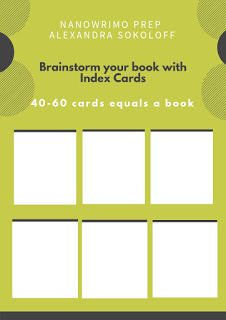 Get yourself a pack of index cards. You can also use Post-Its, and the truly OCD among us use colored Post-Its to identify various subplots by color, but I find having to make those kinds of decisions just fritzes my brain. I like cards because they’re more durable and I can spread them out on the floor for me to crawl around and for the cats to walk over; it somehow feels less like work that way. Everyone has their own method - experiment and find what works best for you.
Get yourself a pack of index cards. You can also use Post-Its, and the truly OCD among us use colored Post-Its to identify various subplots by color, but I find having to make those kinds of decisions just fritzes my brain. I like cards because they’re more durable and I can spread them out on the floor for me to crawl around and for the cats to walk over; it somehow feels less like work that way. Everyone has their own method - experiment and find what works best for you.A movie has about 40 to 60 scenes (a drama more like 40, an action movie more like 60), every scene goes on one card. Now, if you’re structuring a novel this way, you may be doubling or tripling the scene count, but for me, the chapter count remains exactly the same: forty to sixty chapters to a book.
So count yourself out 40-60 index cards. That's your book! You can actually hold it in your hand. Pretty cool, right?
All you do at first is write down all the scenes you know about your story, one scene per card (just one or two lines describing each scene - it can be as simple as - "Hero and heroine meet" or - "Meet the antagonist".)
You don’t have to put them in order yet - that's the next post!
I love the cards because they are such an overview. You can stick a bunch of vaguely related scenes together in a clump, rearrange one or two, and suddenly see a perfect progression of an entire sequence. You can throw away cards that aren’t working, or make several cards with the same scene and try them in different parts of your story board (which we'll talk about next).
You will find it is often shockingly fast and simple to structure a whole story this way.
ASSIGNMENT:
-- Get a pack of index cards or Post Its and write down all the scenes you know about your story.
--------------------------------------------------------------------------------------------
All the information on this blog and more, including full story structure breakdowns of various movies, is available in the workbooks.:
This new workbook updates all the text in the first Screenwriting Tricks for Authors ebook with all the many tricks I’ve learned over my last few years of writing and teaching—and doubles the material of the first book, as well as adding six more full story breakdowns.

STEALING HOLLYWOOD ebook $3.99
STEALING HOLLYWOOD US print $14.99
STEALING HOLLYWOOD print, all countries
WRITING LOVE
Writing Love is a shorter version of the workbook, using examples from love stories, romantic suspense, and romantic comedy - available in e formats for just $2.99.
 - Smashwords (includes online viewing and pdf file)
- Smashwords (includes online viewing and pdf file)- Amazon/Kindle
- Barnes & Noble/Nook
- Amazon UK
- Amazon DE
---------------------
You can also sign up to get free movie breakdowns here:
Get free Story Structure extras and movie breakdowns
Next up: The Story Grid
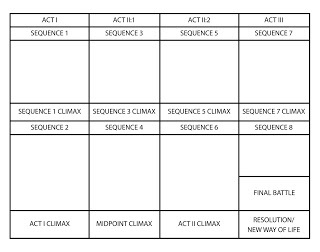
___________________________________________________________________
Huntress series sale, $1.99
Anyone up for some female vigilante justice?
All five books of my Thriller Award-nominated Huntress Moon series are on sale, just $1.99 each on Amazon US. The series turns tropes of violence against women inside out: my haunted FBI agent is on the hunt for a female serial killer. Who kills men. All over the country. For years.
So if you're in the mood to see the predators LOSE, here’s your chance to get a great deal.
Special Agent Matthew Roarke thought he knew what evil was. He was wrong.
Shop for all five here

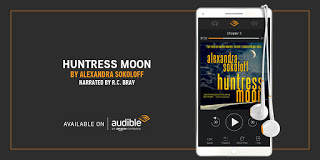 Huntress Moon - Audiobook
Huntress Moon - Audiobook Voice Arts Award for Best Audiobook Narration
Audiobook junkies might want to take the sale opportunity to pick up the ebook - then add the narration for as low as $1.99.
Huntress Moon and my amazing narrator, RC Bray, won a Voice Arts Award for Best Audiobook Narration, Crime & Thriller.
Bob is also the multi-award-winning narrator of the blockbuster audiobook of The Martian, and you can hear his stellar narration in all five Huntress books.
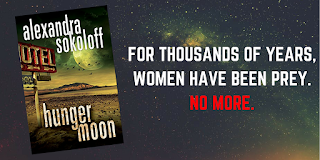
It's June! Is your book written yet?
Happy first official day of summer! (I say this so often, but I'm saying it again. How did it get to be June?)
June 1, 2021—and I just finished another, nearly final! draft of Book 1 of my new Golden Gate series.

Always a bit of a miracle, finishing a book. And this one is pretty epic. I should definitely be out celebrating. But it's a miracle I've come to expect, because I've made it happen often enough that there's no reason NOT to believe I'll do it again, and again, and again.
That's lucky, I know. A lot of people would love to write books, but never get there.
As an author, I tend to think, Well, not everyone's cut out to be a writer. Sometimes I even think, Why would you be a writer if you could do anything else?
It's such a weird thing to do! It's not that easy to sit in a chair (or in bed!) for eight or ten hours a day and give your whole consciousness over to a story. It's both numbingly static and a constant, relentless expenditure of energy. And it takes such a long, long time.
But there is nothing more satisfying as finishing. Bringing your characters and their world to life not only for yourself, but for anyone who picks up the book. It's just magical.
And as a writing teacher, it always gnaws at me. What keeps people who have perfectly great ideas from getting to a finished, published book? And the lifelong career that hopefully comes after that?
I meet so many people who I would have thought were a slam dunk for publication, and year after year I hear from them or about them one way or another and—still no book.So I'm asking. Is your book written yet?
Why not?
Seriously. Why not?
Most spiritual teachers I know would say— You know why. You always know.
So name it.
- Is time? The kids? Your spouse? Your job? Your health? Are you not even writing 15 minutes a day, or even 5?
- Is it fear? Do you not want to find out that you can't do this thing that you so want to do?
- Are you stuck? Do you have half a book, a quarter, or even a full draft—but have no idea where to go next?
- Or have you already written a book, or several, that you know are not good enough? Are you worried you'll spend six long months pouring your heart into another book, only to find once again that you can't sell it?
- Are you thinking that you'll have to learn this whole scary self-publishing thing on top of having to write the book to begin with and it's just too exhausting for words?
I really am asking, because I really think you should ask yourself. If your book isn't written, why not?
Asking the question is always the first step to fixing it.
- Alex
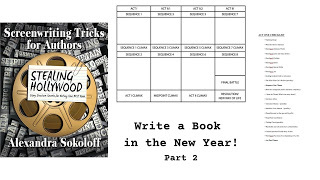
Need help? Online workshop now open!
Nanowrimo Now What?
So now what?
First of all, I hope you’ve had a good long break. If at all possible, when you’ve finished a first draft - Take a break. As long a break as possible.
You should keep to a writing schedule, start brainstorming the next project, maybe do some random collaging to see what images come up that might lead to something fantastic - but if you have a completed draft, then what you need most of all is SPACE from it. You are going to need fresh eyes to do the read-through that is going to take you to the next level, and the only way for you to get those fresh eyes is to leave the story alone for a while.
And if you’re here in this New Year and you still haven’t gotten through to “The End” then my advice is always - Keep going. You must get through to The End, no matter how rough it is (rough meaning the process AND the pages…). You can slow down your schedule, set a lower per-day word or page count, but do not stop. Write every day, or every other day if that’s your schedule, but get the sucker done.
You may end up throwing away most of what you write, but it is a really, really, really bad idea not to get all the way through a story. That is how most books, scripts and probably most all other things in life worth doing are abandoned.
But once you have bashed through to the end of your opus, and have that dreaded first draft done…
Ah, now comes the fun part. At least, I think so! No matter how hard the subsequent drafts may be, nothing is ever as hard as that sucky first draft.
But whoever said “Writing is rewriting” was oh-so-right.
While I almost never print out anything anymore, I still recommend printing out your book or script to do your read through.
Don’t get hung up on trying to rewrite. In your first read you are reading all the way through to get a sense of the book overall. You might want to do it in 50-100 page sessions at a time— it’s useful to read through one Act at a time so you can absorb each Act before you move on to the next reading session and the next Act.
Have a pencil or pen to scribble a quick note or slash out something that very obviously isn’t working, but then put the pencil down and keep reading. Again, you’re not rewriting yet, you’re getting a sense of your book.
And this is key: What you wrote is NOT what you thought you were going to write. It never is! So you need to see what you actually did write. And then approach the story that you have, as your own editor.
Once you’ve done your read through, I suggest you sit in a quiet and comfortable place for several hours and make all the notes you can without looking at your pages at all. Just download all your impressions of the book. Make sure you’re making notes on all the good stuff as well as bad! This step might take several sessions, and it’s worth it.
To help you launch into the rewriting process, here are some next steps that can be taken in whatever order is useful to you.
Top Ten Things I Know About Editing
1. Cut, cut, cut.
When you first start writing, you are reluctant to cut anything. Believe me, I remember. But the truth is, beginning writers very, very, VERY often duplicate scenes, and characters, too. And dialogue, oh man, do inexperienced writers duplicate dialogue! The same things happen over and over again, are said over and over again. It will be less painful for you to cut if you learn to look for and start to recognize when you’re duplicating scenes, actions, characters and dialogue. Those are the obvious places to cut and combine.
Some very wise writer (unfortunately I have no idea who) said, “If it occurs to you to cut, do so.” This seems harsh and scary, I know. Often I’ll flag something in a manuscript as “Could cut” and leave it in my draft for several passes until I finally bite the bullet and get rid of it. So, you know, that’s fine. Allow yourself to CONSIDER cutting something, first. No commitment! But once you’ve considered cutting, you almost always will. It's okay if you bitch about it all the way to the trash file, too - I always do.
2. Figure out your SETPIECES, and start to shape those.
This is such a hugely important part of rewriting that I’m going to do a dedicated post about it this week. But as you’re looking to cut and combine, you’re also looking for those genre-specific, thematic, climactic scenes that will sell your book or film and make it come alive and live on in every reader/audience’s imagination. Stay tuned for more!
3. Find a great critique group.
This is easier said than done, but you NEED a group, or a series of beta readers, who will commit themselves to making your work the best it can be, just as you commit the same to their work. They may not admit it, but most editors and publishing houses expect their authors to find trusted readers and colleagues to give them that initial intensive feedback. Really.
4. Do several passes.
Finish your first draft, no matter how rough it is, and give yourself a break. Then read, cut, polish, put in notes. Repeat. And repeat again. Always give yourself time off between reads if you can. The closer your book is to done, the more uncomfortable the unwieldy sections will seem to you, and you will be more and more okay with getting rid of them. Read on for the specific kinds of passes I recommend doing.
5. Whatever your genre is, do a dedicated pass focusing on Genre.
For a thriller: thrills and suspense. For a mystery: clues and misdirection and suspense. For a comedy: a comedic pass. For a romance: a sex pass. Or “emotional” pass, if you must call it that. For horror… well, you get it.
I write suspense. So after I’ve written that first agonizing bash-through draft of a book or script, and probably a second or third draft just to make it readable, I will at some point do a dedicated pass just to amp up the suspense, and I highly recommend trying it, because it’s amazing how many great ideas you will come up with for suspense scenes (or comic scenes, or romantic scenes) if you are going through your story just focused on how to inject and layer in suspense, or horror, or comedy, or romance. It’s your JOB to deliver the genre you’re writing in. It’s worth a dedicated pass to make sure you’re giving your readers what they’re buying the book for.
6. Know your Three Act Structure.
If something in your story is sagging, it is amazing how quickly you can pull your narrative into line by looking at the scene or sequence you have around page 100 (or whatever page is ¼ way through the book), page 200, (or whatever page is ½ way through the book), page 300 (or whatever page is ¾ through the book) and your Final Battle at the end. Each of those scenes are SETPIECES: they should be huge, pivotal, devastating, game-changing scenes or sequences (even if it’s just emotional devastation). Those four points are the tentpoles of your story.
7. Do a dedicated DESIRE LINE pass in which you ask yourself for every scene: “What does this character WANT? Who is opposing them in this scene? Who WINS in the scene? What will they do now?”
8. Do a dedicated EMOTIONAL pass, in which you ask yourself in every chapter, every scene: What do I want my readers to FEEL in this moment?
9. Do a dedicated SENSORY pass, in which you make sure you’re covering what you want the reader to see, hear, feel, taste, smell, and sense.
10. Read your book aloud. All of it. Cover to cover.
I wouldn’t recommend doing this with a first draft unless you feel it’s very close to the final product, but when you’re further along, the best thing I know to do to edit a book or script is to read it aloud. The whole thing. I know, this takes several days, and you will lose your voice. Get some good cough drops. But there is no better way to find errors — spelling, grammar, continuity, and rhythmic errors. Try it, you’ll be amazed.
And all the way along -
Use the essential elements of story structure to pull your story into dramatic line.
In the Stealing Hollywood workbooks I’ve compiled a extensive checklist of essential story elements, Act by Act (with plenty of examples of each element) that I use both when I’m brainstorming a story with index cards and a story structure grid, and I use the index cards, structure grid, and story elements checklist again when I’m starting to revise, to make sure I’m hitting all of these points. In the online workshop I help writers work through those elements Act by Act. https://screenwriting-tricks-for-auth...
So this is a big, big topic, that will take a lot more posts. Or you can get the books and get started.
 https://screenwriting-tricks-for-auth...
https://screenwriting-tricks-for-auth...Writing Love: Screenwriting Tricks for Authors II
More Screenwriting Tricks for Authors: https://alexandrasokoloff.substack.com
First Chapters
So how do we approach writing—or rewriting one?
(And if you’re writing a script, same advice goes, throughout this post.)
The best advice I can give you here is: Don’t sweat this one on a first draft. Or even maybe on the second.
Seriously.
Despite that scene we’ve all seen in practically any Hollywood movie with a writer character in it, there is no law that says you have to start your book by sitting down at your keyboard, cracking your knuckles, and typing “Chapter One.”
Your opening chapter might be the last thing you end up writing. You may be reading a first of second or third draft and find a chapter halfway through the book that you realize needs to go first.
But that doesn’t mean you shouldn’t be thinking about it, keeping it cooking on the back burner. And maybe you’re down to the wire and need some inspiration.
So here’s an exercise to help.
I’m sure you all have TBR (“to be read”) piles. Around our house these are worse than average, because we’re a two-author household. We both have hundreds of books on our Kindles for our own research and pleasure, but we also get sent tons of physical books to blurb by publishers and friends, and to add to the chaos Craig programs two book festivals and consults on others—so you can only imagine the submissions by panel hopefuls! When I was a full-time screenwriter, I had similar stacks of scripts.
So make use of these treasures!
1. Take 10 books from your TBR pile or shelf that you might feel like reading. Read just the opening chapter of each. Separate them into piles, kind of like with Marie Kondo:
-- Not grabbing me.
-- Interesting, I could go further.
-- Never mind the homework, I’m reading THIS one. Now go away.
2. Make a list of the books in that third pile, and then add first chapters by your own favorite authors that just turn you inside out. Keep listing until you have a Master List of ten books.
There is no question that reading a bunch of — well, anything — in a row gives you a good idea of what to do and not to do in executing that particular thing. But it’s doing the next work that will really get you far.
Read more here
From Screenwriting Tricks for Authors:

Stealing Hollywood: Story Structure Secrets for Writing Your Best Book



